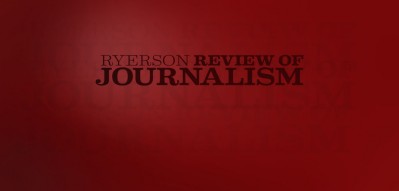Saturday Night, the magazine that hasn’t made a penny for more than 40 years, has always been a hard sell. And now that the venerable but perennially money-losing magazine is operating on a controlled-circulation basis, few media forecasters are predicting an easier economic future. At the magazine’s glitzy launch party last October at Toronto’s Royal York Hotel, David Olive, editor of Report On Business Magazine, foresaw a rocky ride. “The bigger the launch, the bigger the fall,” he said, recalling the demise of Vista, Domino, Quest and City Woman.
Under the intense scrutiny of the country’s magazine industry, consulting publisher Jeffrey Shearer has been charged with the burdensome task of turning Saturday Night, which is one of Canada’s most expensive magazines to produce and is estimated to still be losing money, into a profitable success. Shearer rode the controlled-circulation concept to heady heights with Quest and City Woman, as executive vicepresident of Comac Communications Ltd., until Quest got into trouble in the early eighties. He ought to know that controlled circulation is a hard sell.
But Shearer believes Saturday Night will not only break even, but will also see profits within the next two to five years. “We’re doing tracking studies by phone and personal interviews with readers after every issue. We’re getting an excellent response. Our targetted audience is clearly interested in this broader range of editorial material. They may not have read it before, but they’re reading it now,” he says.
Restructured from a subscriber base of 127,000 to a controlled-circulation newspaper supplement of 400,000, gracing homes with incomes of $40,000 a year or more, the new Saturday Night is delivered with selected issues of the Montreal Gazette, The Ottawa Citizen, the Calgary Herald, the Edmonton Journal, The Vancouver Sun and The Globe and Mail. Still available on the newsstand and delivered by mail to paying subscribers outside the targetted controlled-circulation areas, the relaunched magazine is a controlled/subscriber hybrid.
Patrick Walshe, vicepresident of the advertising firm Harrison, Young, Pesonen and Newell Inc., says, “It’s a quasi-controlled magazine. A magazine that will succeed is one that is really well-focused and well-niched, and I don’t see Saturday Night delivering on these scores. The key issue is not the receivership of 400,000 magazines, but the amount of time spent by its readers and how they value it.”
Janet Landreth, media group head of the McKim Media Group, explains, “Advertisers in the first few issues weren’t taking a big risk because of the huge discounting that went on.” The rejuvenated Saturday Night will have to continue discounting rates until it can assure advertisers it is not only being received but read. Nevertheless, advertising sales manager Jennifer Bedford says ad sales are strong. “In the first three issues alone, we’ve generated more advertising business than we did all of last year.”
The flashy premier issue resembled a cross between Vanity Fair and Harper’s, instead of the blend of stodginess and cultural nationalism that characterized its former incarnation. There was more lavish display of type, artwork, photography and graphics. But despite the new look, clearly aimed at a younger audience, there wasn’t much new in the new Saturday Night. Ironically, the cover, an arresting photo of Cowboy Junkies’ Margo Timmins, left the impression that the magazine was outdated. Timmins might have been hot, say four years ago, but at the time of the release of the magazine, she wasn’t on tour, nor had she produced a new record.
After reviewing the first issue, Doug Bennet, editor of Masthead magazine, didn’t think the restructuring was satisfying both new and old readers. “It’s unfocused right now. The new graphics are amazing, but it’s not known who they’re trying to appeal to,” he said. “As a result of this ambivalence, advertisers will probably wait for six months to a year before buying.”
But despite such negative predictions, there are at least a few who don’t expect the new Saturday Night to fall from the sky just yet. Hugh Dow, president of Initiative Media, agrees there is some obvious fallout from the previous readership, but he believes the magazine will ultimately attract a broader audience. “It has a sizable circulation and good editorial content.”
Joann Webb, who has been the editor of a number of publications, sees the magazine as a breath of fresh air. “I am personally excited that Saturday Night has the guts to move forward in the midst of the bleakest environment I’ve ever seen. I don’t know if they will succeed, but I sure as hell hope they do.”
About the author
Sharon Lern was the Assistant Managing Editor, Production for the Spring 1992 issue of the Ryerson Review of Journalism.
